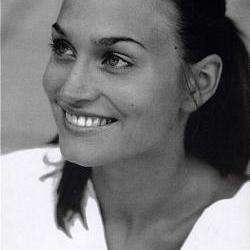Lorin Maazel and the Vienna Philharmonic Orchestra have a very close relationship. In fact, if they were a married couple they would have celebrated their golden anniversary in 2012, having survived and lived to tell the tale of a 50-year collaboration. Not that their relationship has been a monogamous one: Maazel has worked with over 200 different orchestras in his 70-plus years on the podium, and the Vienna Philharmonic have had their fair share of partners as well. However, as one would expect, Vienna and Maazel have a special love for each other, which was clear as soon as the maestro strode onto the stage; Maazel received the sort of applause that most artists would kill for after finishing their performances, and deservedly so. It was eminently clear throughout the evening that Maazel knows his craft – he led the orchestra brilliantly, giving entrances, indicating mood and dictating movement all without the aid of a score.
Tchaikovky’s Orchestral Suite no. 3 in G major, Op. 55 opened the concert. From the opening of the highly melodic “Elégie”, the Philharmonic’s characteristic warmth of tone and fullness of sound was apparent and served Tchaikovky’s lower, darker voicings well. A pensive “Valse mélancolique” followed. The third movement, a scherzo, featured dialogue between a staccato, repetitive theme and syncopated two-note gestures. All three opening movements had beautiful moments; however, the orchestra did not seem to feel particularly at ease. There were ensemble issues between the groups playing melody and those filling accompaniment roles on a number of occasions. Moreover, a few entrances that were not as clean as I’d expect, and certain transitions were awkward and labored. Just when I was wondering if we shouldn’t just wait for the Mariinsky to come to town to hear Russian music, the fourth movement, a “Tema con variazioni”, restored my faith. The folk-like theme, introduced in the violins, went through twelve variations incorporating every conceivable transformation: running sixteenth-note variation, rebirth in minor keys, scorings for woodwinds only, frenetic dances colored with cymbals and triangles, martial renditions, contrapuntal movement, and much more. The final variations built dramatically, using everything from trumpet fanfares, sweeping passagework, and kettledrum rolls, until a triumphant, climactic “Polacca” erupted in a flurry of bows, crashing cymbals and a mass of sound that could blow your hair back. It is easy to see why this movement was often performed by itself during Tchaikovsky’s lifetime: it is unquestionably the high point of the work. It was also magnificently performed; there were heartbreakingly melancholic, virtuosic solos from the concertmaster among others, rich legato string lines, and oh, the brass...
After the intermission, Shostakovich’s controversial Fifth Symphony was on the program. Written in 1937 in Stalinist Russia, it officially professed Shostakovich’s acquiescence to the party after the debilitating criticism he had received in relation to his opera Lady Macbeth of Mtsensk the previous year. Others later contended that Shostakovich, through his genius, was able with this symphony to both speak to the hearts of his suffering countrymen and appease the powers that be. Regardless of intention, the symphony received an ovation that lasted for over an hour at its première, and is by all standards an intense work.
The first movement is epic and stark, opening with a dark, baroque canon, and featuring rising and falling minor sixths and open scoring. A long-short-short accompaniment figure supports a lyrical secondary theme in the violins which suddenly gets surprising support from the piano. The climax is brash, featuring shrill piccolo work. It slowly relaxes and a slowly ascending chromatic theme in the celesta brings it to a close.
The following Allegretto is short, introducing the theme with unison cellos. It combines numerous 3/4 forms including the waltz, Ländler and scherzo with an element of humor and folksiness that sounds rather Mahleresque.
The Largo is characterized by a thickly textured string sound which is occasionally interrupted by interludes from winds and harp. The brass, so present in the previous movement, are conspicuously absent. The mood bespeaks pathos, deep quiet and measured respect.
The final movement was loudly touted in Shostakovich’s day as representing the victory of the Soviet personality, molded by education, receiving a final “enormous optimistic lift”. In reality it feels more a parody of optimism and triumph than its truth. Fortissimo kettledrums, fiery march themes, virtuosity, energy and intense dynamic shifts prevail. The intense scoring (so much piccolo!) and dynamic vigor threaten to peel the paint of the walls and the intense use of bass instruments rattles the floor. More a shrill cry of passionate desperation than triumph, even the shift to a major key at the end does not feel optimistic. In fact, the fatalistic snare flares near the end give a somber bent to the work, and subversive dissonance is never far away.


